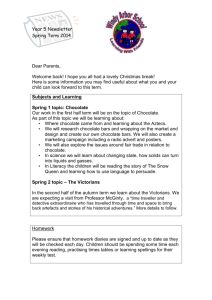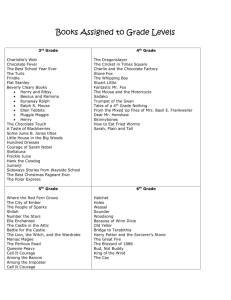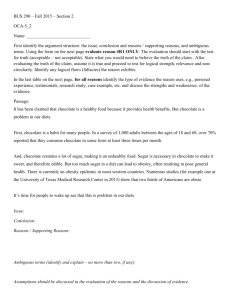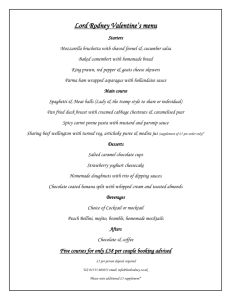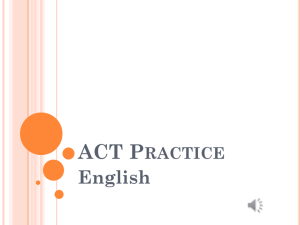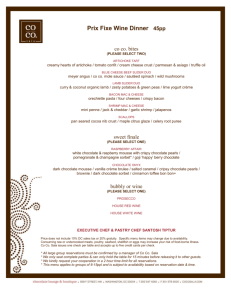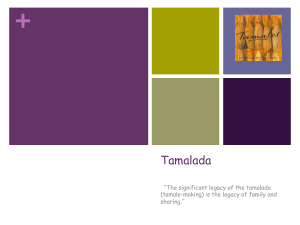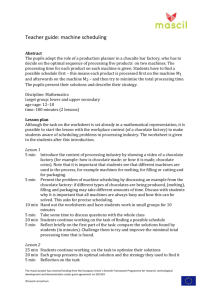BrainChoc - Snapshot Science
advertisement
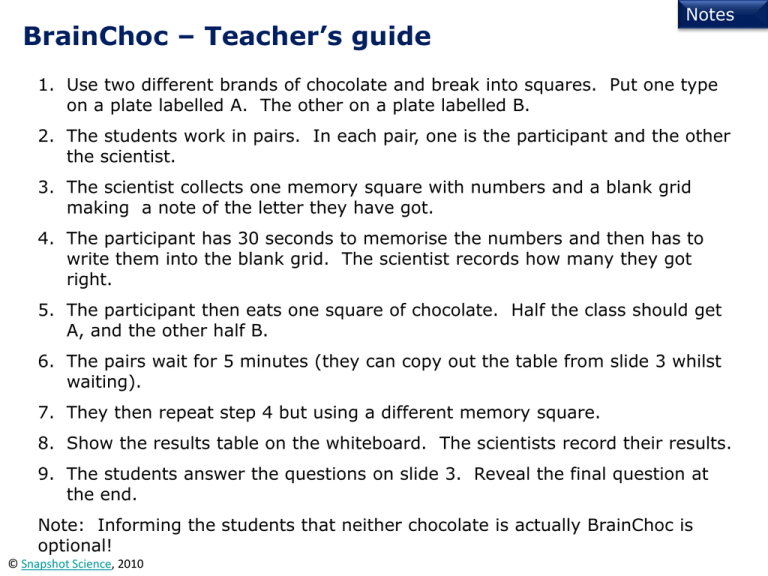
BrainChoc – Teacher’s guide Notes 1. Use two different brands of chocolate and break into squares. Put one type on a plate labelled A. The other on a plate labelled B. 2. The students work in pairs. In each pair, one is the participant and the other the scientist. 3. The scientist collects one memory square with numbers and a blank grid making a note of the letter they have got. 4. The participant has 30 seconds to memorise the numbers and then has to write them into the blank grid. The scientist records how many they got right. 5. The participant then eats one square of chocolate. Half the class should get A, and the other half B. 6. The pairs wait for 5 minutes (they can copy out the table from slide 3 whilst waiting). 7. They then repeat step 4 but using a different memory square. 8. Show the results table on the whiteboard. The scientists record their results. 9. The students answer the questions on slide 3. Reveal the final question at the end. Note: Informing the students that neither chocolate is actually BrainChoc is optional! © Snapshot Science, 2010 Memory squares and blank grids A B C 18 3 20 8 10 16 15 21 11 9 9 21 17 25 20 5 1 23 12 16 22 1 8 23 5 22 1 23 4 13 15 17 6 7 4 3 4 2 20 14 14 15 19 6 7 13 22 11 19 14 12 7 24 6 13 5 18 24 16 8 2 9 24 25 21 19 25 17 10 18 2 12 3 10 11 © Snapshot Science, 2010 Plenary BrainChoc – analysing the data How many more numbers remembered correctly after eating chocolate. Choc 1 2 3 4 5 6 7 Average A B 1. Copy down the average for each chocolate into your book. 2. One of the chocolates was a placebo. What does this mean? Why is it important to use a placebo? 3. This trial was a double-blind trial. What does this mean? Why is it important to run the trial in this way? 4. Chocolate B was the BrainChoc. (Chocolate A was a normal brand). Has this trial proved that it improves memory? Explain your answer. © Snapshot Science, 2010


